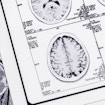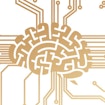
Individuals with autism have deficits in social and emotional learning. The amygdala, a region of the brain involved in orchestrating emotion and emotional memory, is affected in individuals with autism. The nature of the dysfunction is not well characterized, however. Eric Kandel, Yun-Beom Choi, Craig Bailey and their colleagues at Columbia University Medical Center aim to examine the role of an autism-implicated protein, neurexin, at synapses in the amygdala. They also plan to investigate how neurexin is involved in fear memory, a function that is associated with the amygdala.



